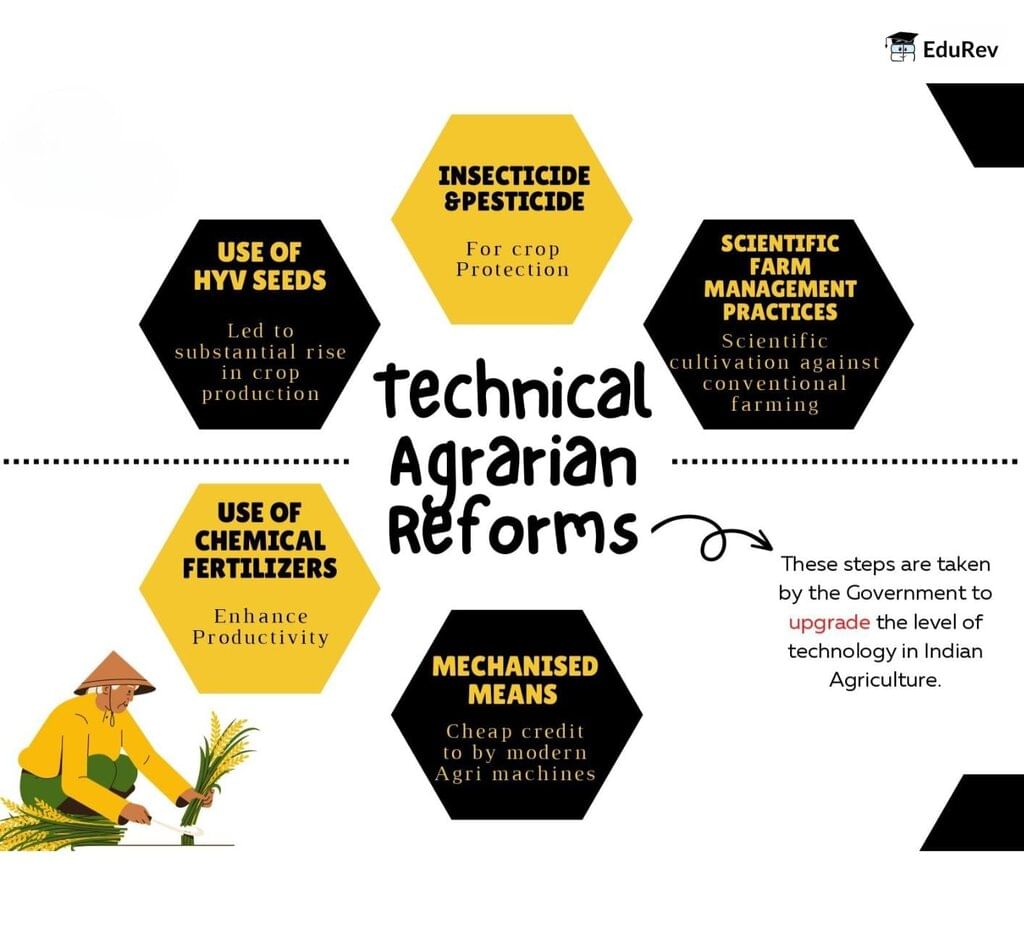UPSC Exam > UPSC Notes > Indian Economy for UPSC CSE > Infographic: Agrarian Reforms
Infographic: Agrarian Reforms | Indian Economy for UPSC CSE PDF Download

The document Infographic: Agrarian Reforms | Indian Economy for UPSC CSE is a part of the UPSC Course Indian Economy for UPSC CSE.
All you need of UPSC at this link: UPSC
|
108 videos|431 docs|128 tests
|
FAQs on Infographic: Agrarian Reforms - Indian Economy for UPSC CSE
| 1. What are agrarian reforms and why are they important in the context of agriculture? |  |
Ans. Agrarian reforms refer to the changes in laws, regulations, and policies related to land ownership and agricultural practices. They aim to improve the socio-economic conditions of farmers, promote equitable land distribution, enhance agricultural productivity, and ensure food security. These reforms are crucial in addressing issues such as landlessness, poverty, and social inequality, thereby fostering sustainable agricultural development.
| 2. What are some key objectives of agrarian reforms? |  |
Ans. The key objectives of agrarian reforms include redistributing land to landless and marginalized farmers, improving agricultural productivity, enhancing the livelihoods of rural communities, ensuring fair access to resources, and reducing rural poverty. Additionally, these reforms seek to empower farmers through cooperative farming and provide them with better access to credit, technology, and markets.
| 3. Can you explain the various types of agrarian reforms that are typically implemented? |  |
Ans. Agrarian reforms can be categorized into several types:
1. Land Reforms: Redistribution of land to landless farmers and abolishing zamindari systems.
2. Tenancy Reforms: Regulating tenancy rights to protect tenants from eviction and ensure fair rental practices.
3. Agricultural Credit Reforms: Providing easier access to credit for farmers to invest in agriculture.
4. Cooperative Farming: Encouraging the formation of cooperatives to enhance collective farming and marketing.
5. Technological Reforms: Introducing modern agricultural techniques and practices to improve productivity.
| 4. What role does the government play in implementing agrarian reforms? |  |
Ans. The government plays a pivotal role in implementing agrarian reforms through policy formulation, legislation, and the establishment of institutions to facilitate land redistribution and support farmers. This includes creating legal frameworks, providing financial assistance, and promoting agricultural education and research. Additionally, governments often collaborate with non-governmental organizations (NGOs) to reach marginalized communities effectively.
| 5. How do agrarian reforms impact rural development and food security? |  |
Ans. Agrarian reforms significantly contribute to rural development by empowering farmers, increasing their income, and improving their access to resources. By redistributing land and ensuring equitable access to agricultural inputs, these reforms enhance agricultural productivity and promote sustainable farming practices. This, in turn, leads to improved food security, as a more productive agricultural sector can meet the food demands of the growing population.
Related Searches





















